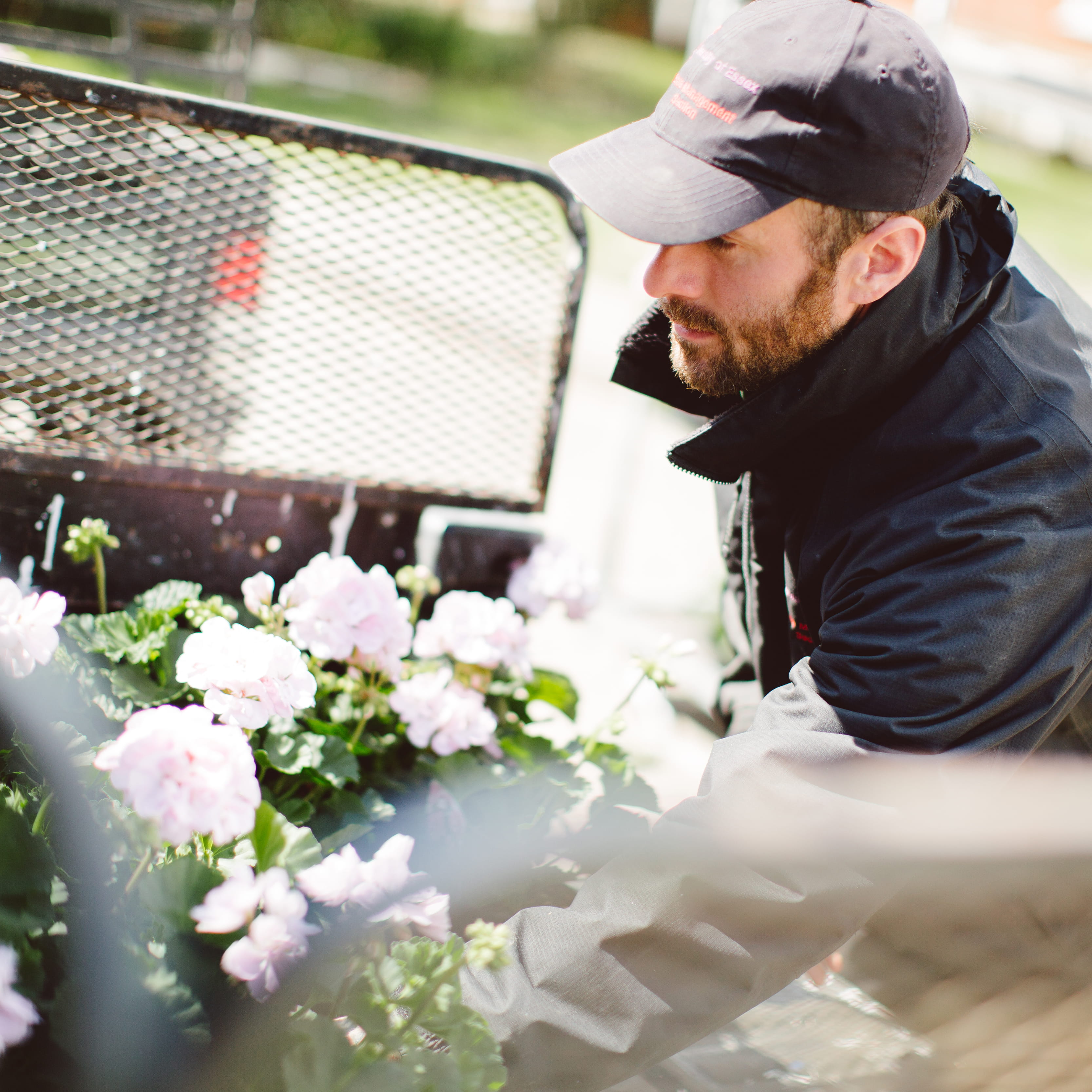Reducing our carbon emissions is a key aspect of our work to lower the University’s impact on the environment. Crucially, we have set the target to reduce our scope 1 and 2 emissions (direct and indirect emissions from energy use and fleet vehicles) by 2035. It’s a long and challenging journey, but we are committed to doing it right. Through the Sustainability Sub-Strategy consultation you showed how much this matters to you, making lots of suggestions for ways emissions on our three campuses could be reduced. We have been taking on board your feedback and wanted to update you with information on what’s available and what we have planned.
Renewable energy
You said: You wanted the university to use energy from renewable sources and to generate electricity ourselves.
We offer: We currently generate approximately 2.5% of our electricity from our solar panels. Our electricity is supplied on a certified renewable energy contract, and the Climate and Ecological Emergency Advisory Group will support the development of the specifications for what we deem environmentally-friendly energy sources when energy is re-tendered in the next 1-2 years.
What we are working on: We are aiming to have infrastructure in place to generate 25% of our electricity demand through on-site renewables by 2026.
Flexible working
You said: You wanted more flexible and remote working options so fewer people were on campus, leading to lower energy usage.
We offer: This fits into the University’s wider work to adapt the ways we work as we come out of the pandemic, and build on what has been learned. We expect hybrid working to become part of our ‘new normal’; flexible working policies have already been updated, and a number teams are involved in the development of the Smart Working at Essex (SWAE) project. Virtual meetings and conferences have also reduced the need to travel.
We’re working on: Development of flexible working spaces that can be used for multiple purposes.
Saving energy
You said: It’s important to switch off computers and appliances when not in use.
We offer: We encourage staff and students to switch off computers and appliances when they are not in use, and some equipment automatically goes to sleep when it has not been used for certain periods of time. This is a great example of where each member of our community can take responsibility for climate-friendly actions. You can save 63g CO2e per hour that your desktop computer is switched off for. Imagine how much that would be for every computer on campus! We have created posters you can download to remind students and staff in your department of the impact they can have.
We’re working on: We are also developing a communication and engagement plan to educate our community about saving energy so we can help to change the behaviours of staff and students. This will include information about best working practices which will act as a guide to the ways we can all contribute to saving energy and making a real difference.
Carbon offsetting
You said: You wanted the university to do more carbon offsetting
We’re working on: We’re looking into options and how best to approach offsetting; it’s still an unregulated market and we want to be sure we get it right. This includes the potential for nature-based offsetting on our campuses. We are also developing a set of principles for carbon offsetting that aligns with the carbon management hierarchy of avoid, reduce, replace, offset.
Our commitment to change
Cutting carbon emissions is a vital and central aspect of reducing our impact on the environment. Reflecting common practice, we measure scope 1 and 2 emissions separately from scope 3 due to their nature. There are many challenges ahead, but also a lot of exciting opportunities. To learn more about our ambitions and progress, visit the sustainability webpages. We will be providing updates on our response to your feedback to the consultation in a series of blogs – please check back regularly to learn more.


